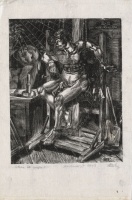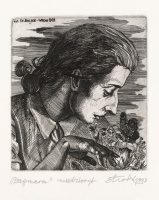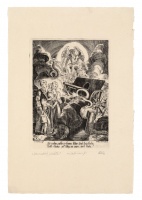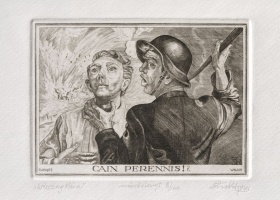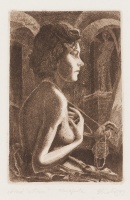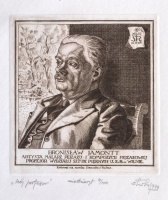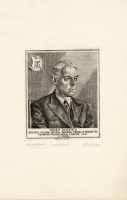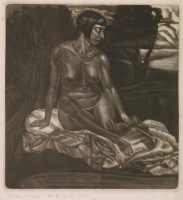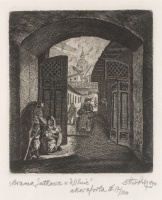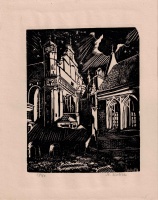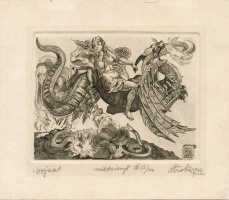
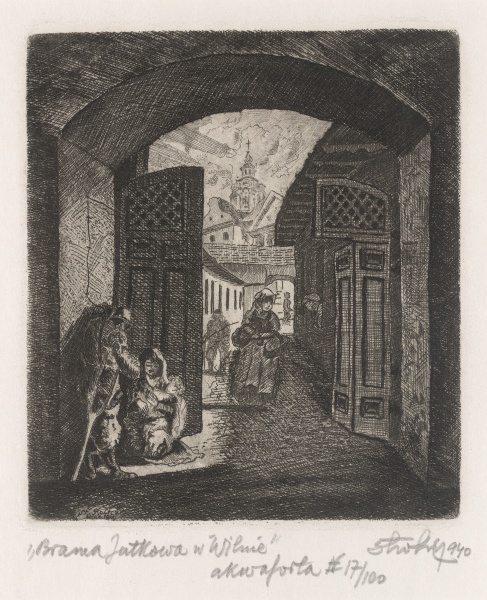

The gateway to Mėsinių (Butcher) Street in Vilnius
| Author: |
Stanisław Rolicz (1913–1997) |
| Created: | 1940 |
| Material: | paper |
| Technique: | etching |
| Dimensions: | 29 × 25.70 cm |
| Signature: | bottom: „Brama Jatkowa Wilnie“ / signature 1940 / akwaforta #17/100 |
Polish artists continued to portray Vilnius during the Second World War as a city with a glorious past, both romantic and sometimes even fantastic. Their works nevertheless usually had an air of tension and drama.
After the war ended, most former teachers and students from the Faculty of Art at Stephen Báthory University moved to cities in northwest Poland, taking with them much of their creative legacy. The tradition of Vilnius’ interwar art and research took root most firmly in the Faculty of Art at Nicolaus Copernicus University in Toruń. The Vilnius Neoclassical tradition, with its emphasis on history and heritage protection, lived on.
Text authors Dovilė Barcytė and Ieva Burbaitė
Source: Law firm Valiunas Ellex art album KAUNAS–VILNIUS / 1918–1945 (2021). Compilers and text authors Dovilė Barcytė and Ieva BurbaitėExpositions: “Vilnius. Topophilia. Views of Vilnius from the collection of the law firm Ellex Valiunas”, 5 October – 26 November 2017, National Gallery of Art, Vilnius (curator Laima Laučkaitė)







